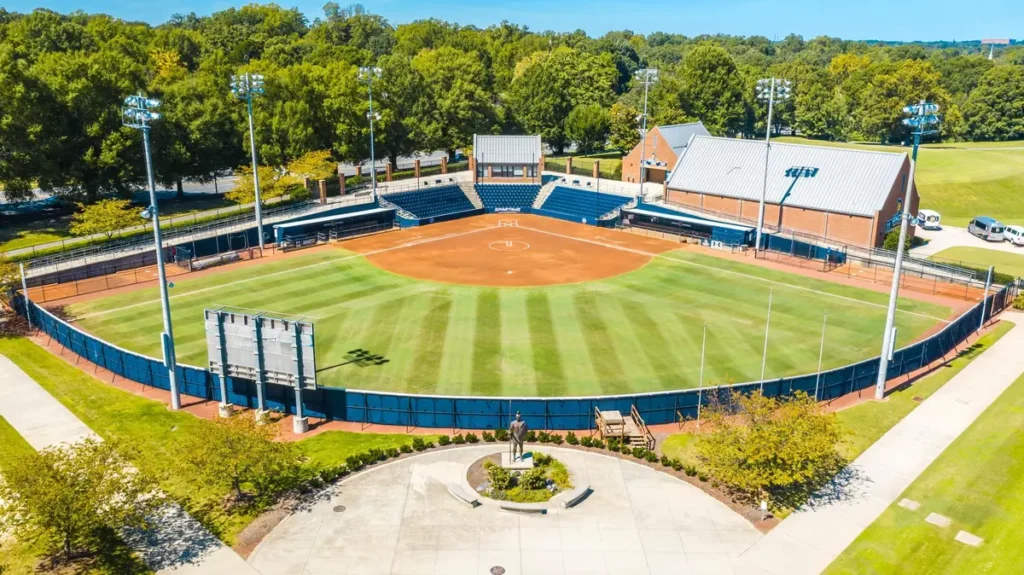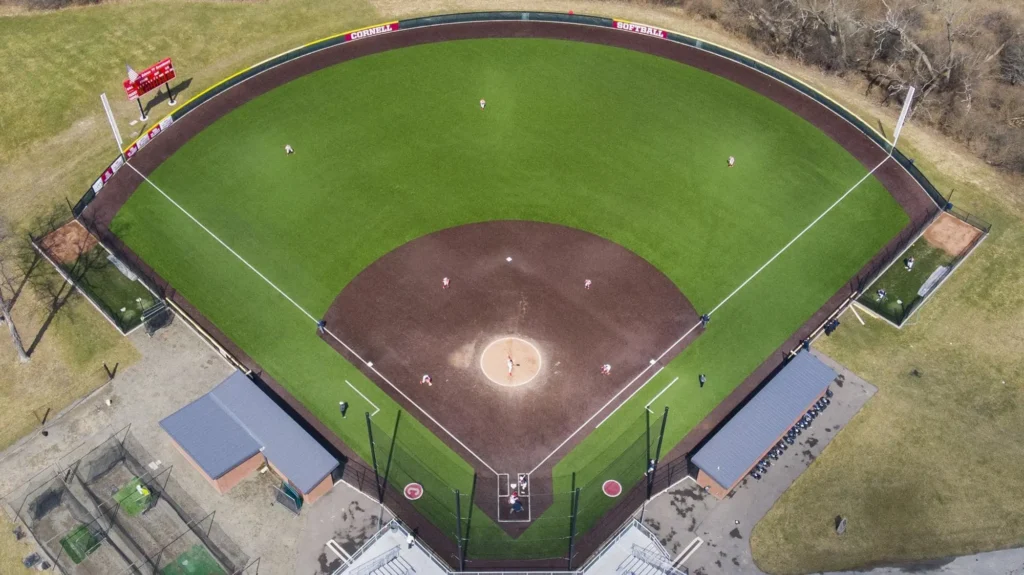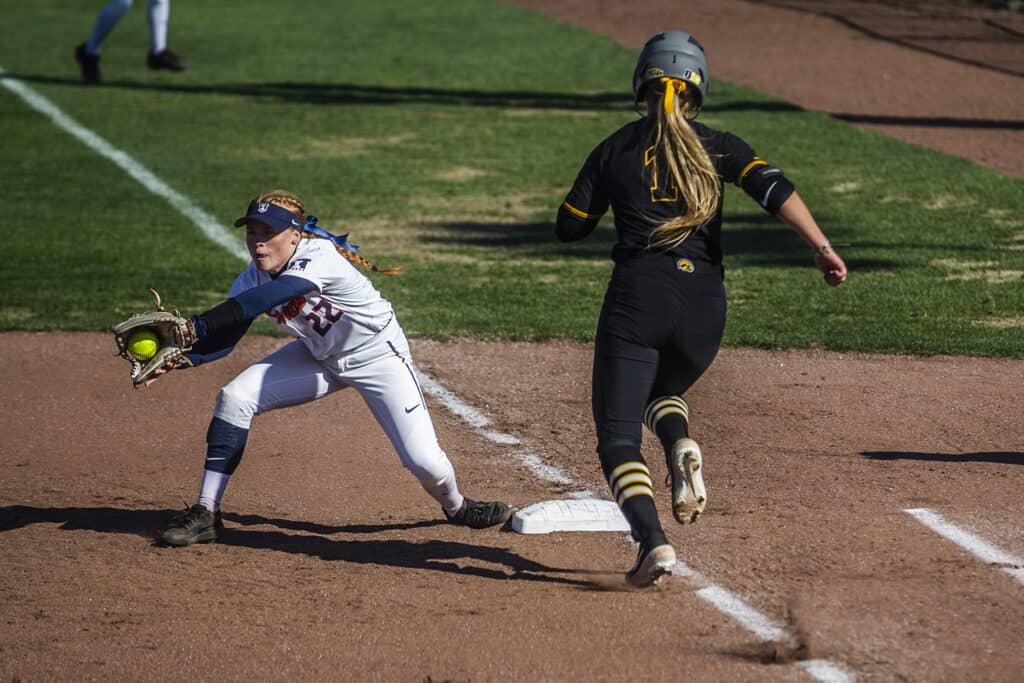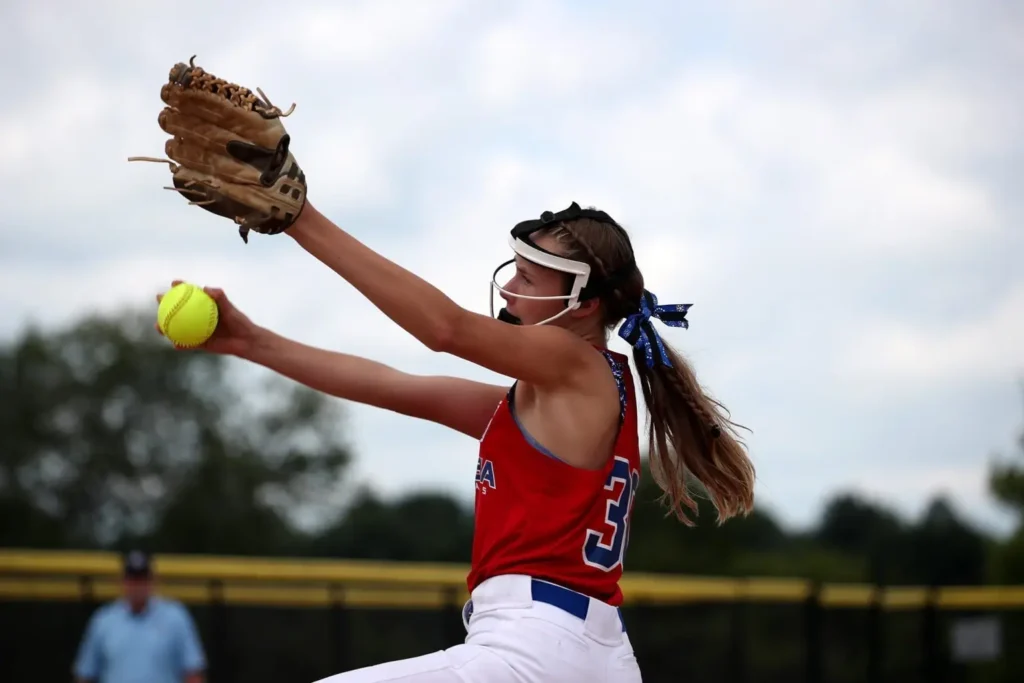College softball is a popular sport in the United States, with millions of fans tuning in to watch their favorite teams compete. The distance between the bases has a significant impact on the game, influencing everything from speed and agility to power and strategy.
In this article, we will explore the rules and history behind college softball base distance, as well as the strategic advantages and playing styles associated with different base paths.
What is the base distance in softball?

Base distance refers to the distance between the bases on the softball field. It is an essential component of the game because it affects the overall dynamics of the sport.
The base distance is directly related to the speed and agility required by the players. The shorter distance of 60 feet in fastpitch softball demands a quick reaction time from the players. The outfielders need to be quick on their feet to catch the ball, and the infielders need to be agile to make quick throws. The longer distance of 65 feet in slowpitch softball allows for more time to react, but it also requires players to have more endurance to cover the extra gap.
The base distance also plays a crucial role in the strategy of the game. Base stealing, for example, is more common in fastpitch softball due to the shorter length. A runner can take a bigger lead off of the first base, making it easier to steal second base. In slowpitch softball, base stealing is less common, but the longer base distance allows for more opportunities for runners to take extra bases.
College softball base distance

According to NCCA, the official distance between bases in college softball is 60 feet, the same as in high school softball. This distance has been in place for many years and is widely accepted as the standard for the game.
And the distance between the pitcher’s plate (also known as the rubber) and home plate is 43 feet for college softball, according to the official rules. This distance is also used in high school softball and is shorter than the distance used in baseball, which is 60 feet 6 inches.
History
College softball base distance has undergone several changes over the years. In the early days, it was set at 60 feet, which is still used in fastpitch softball today. However, in the 1980s, slowpitch softball gained popularity, and the base distance was extended to 65 feet.

This distance has since become the standard for slowpitch softball at the college level. Additionally, in 2018, the NCAA implemented a rule change for Division I softball, moving the pitching rubber back from 43 feet to 40 feet. This change was made to increase offensive production and create a better balance between offense and defense.
How does base distance impact the game?
The base distance in softball plays a significant role in shaping the game’s dynamics. It has a substantial impact on the strategies and skills that players must utilize to win the game. Softball is a game that requires agility, speed, and quick reactions, and the base distance affects all of these attributes.
For fastpitch softball
In fastpitch softball, the standard base distance is 60 feet. This shorter distance requires players to have quick reflexes and be able to react rapidly to the ball. Outfielders must be able to cover a lot of ground quickly to catch fly balls, while infielders must have quick reflexes to field grounders and make throws to other bases.
Additionally, base stealing is a more common occurrence in fastpitch softball due to the shorter gap. Runners can take a more significant lead off the base and have a better chance of stealing the next one. Catchers must also have a quick release to throw out runners trying to steal.

For slowpitch softball
On the other hand, base in slowpitch softball has a distance of 65 feet. The longer gap allows players to take a little longer to react to the ball, but it also demands more endurance. Outfielders need to cover more ground, and infielders must make longer throws, which can be challenging. As a result, slowpitch softball players need to have good endurance to perform well throughout the game.
The base distance also impacts the overall strategies of the game. In fastpitch softball, coaches may use the short base length to their advantage by encouraging more aggressive base running and attempting more steals. In contrast, slowpitch coaches may focus on hitting the ball deep and using the extra distance to get more runners on base.
Moreover, the base distance can impact the pitching strategy as well. In fastpitch softball, pitchers are closer to home plate, which means they can throw pitches with more velocity and have more control over their pitches. They also have less time to react, so they must have a quick release and good accuracy. In slowpitch softball, the longer distance gives batters more time to react to pitches, making it more challenging for pitchers to throw strikes.
Strategy for college softball base distance
The strategy for college softball base distance is essential to the game. Coaches must choose the base length best suits their team’s strengths and playing style. Understanding how to leverage these distances can give teams a strategic advantage.
Strategy for short base distance

The shorter base length provides more opportunities for aggressive base running for teams that play fastpitch softball. Coaches can instruct their runners to take larger leads off the bases, allowing them to steal more easily. They can also take advantage of bunts and slap hits, enabling runners to take advantage of the infield gaps.
Additionally, the shorter distance can make it more challenging for pitchers to throw strikes, leading to more walks and hit batters. For this reason, teams that play fastpitch softball often focus on having a solid pitching rotation and quick infielders.
Strategy for long base distance
In contrast, slowpitch softball has a longer base length, meaning that base running is less aggressive than fastpitch softball. However, it allows players more time to react to the ball, making getting to the right position on the field easier.
Additionally, slowpitch softball typically involves more fly balls, so outfielders must be quick and able to cover much ground. Slowpitch teams must focus on good communication between players and positioning themselves correctly on the field.

One strategy that can be effective for both fastpitch and slowpitch teams is to change the base distance during the game.
For example, a team may start with the standard 60-foot distance for fastpitch softball but switch to 65 feet during the game to throw off their opponents. This strategy can be particularly effective if the opposing team is not used to playing with a longer base length.
Another strategy is to use the base distance to create offensive opportunities. For example, in fastpitch softball, teams may attempt to bunt more often to take advantage of the shorter base length. In slowpitch softball, teams may use a more aggressive hitting approach to get the ball deep into the outfield, taking advantage of the extra distance between the bases.
Conclusion
As we have explored in this article, college softball base distance is a critical aspect of the game, with a rich history and ongoing impact on strategy and playing style. Understanding the rules and strategic advantages associated with different base paths is essential for players and coaches looking to optimize their performance and gain a competitive edge on the field.
Whether a team chooses a shorter or longer base path, it’s important to consider their players’ strengths and weaknesses, the opposing team’s strengths and weaknesses, and the game situation when adapting playing style to base path distance. By doing so, teams can make the most of their strategic advantages and minimize the impact of any limitations associated with their chosen base path.
In conclusion, this is a fascinating and dynamic game aspect with a rich history and ongoing impact on strategy and playing style. By understanding the rules, history, and strategic advantages associated with different base paths, players and coaches can elevate their performance and take their game to the next level.
Norman Dang is a diehard softball fan with full of energy and enthusiasm. He has over ten years of experience in playing softball and coaching softball for kids. He shares his expertise on the SoftballTriple blog.

